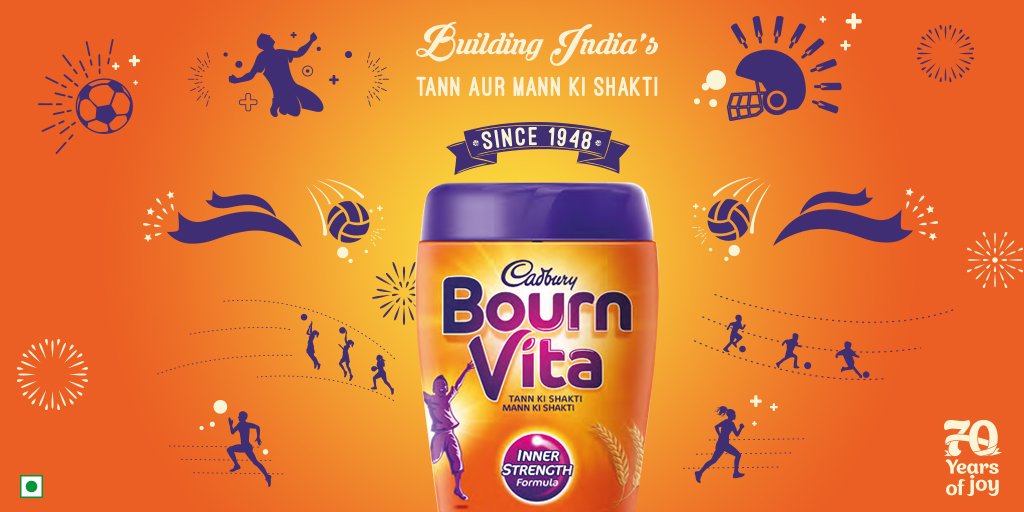Post by Prasad Narsimhan, Managing Partner Asia based in Bangalore.
A new campaign by Bournvita, Indian kids’ favourite malted drink, shows the challenge of balancing freshness and consistency to maintain the vitality of long-established brands. I wonder if the Bournvita team have pushed too hard on the freshness, missing out on opportunities to build on and amplify the brand’s ‘distinctive memory structure’, as I outline below.
1. The power of fresh consistency
Bournvita has been a remarkable example of what we call ‘fresh consistency’. Decades of consistent category-leading marketing across the whole mix ( product, packaging, distribution & advertising) have helped the brand create a distinctive positioning and set of brand properties.
Bournvita consistently promised the idea of kids having the confidence to win to Indian moms. This was highly relevant in a country where parents are especially concerned with their kids’ success, sometimes to the point of obsession ! Bournvita resonated with a very large section of moms, making Bournvita a staple in most homes with kids. Consistency also came from creating and amplifying distinctive brand properties:
- Packaging: unique dumbell shaped packaging with vibrant action graphics projects dynamic energy
- Comms: promise of the ‘Confidence to Win’ summed up with the tagline of ‘Tann ki Shakti, Mann ki Shakti, Bournvita’ (Strength for Body & Mind)
- Activation: generations have grown up with the iconic TV activation property ‘Bournvita Quiz Contest’ challenging India’s brightest young minds.

Freshness has been injected to reflect changes in culture. An updated tagline ‘Tayaari Jeet Ki’ (Prepare to Win) recognises a more competitive world requiring hard work, grit & determination, showcasing ambitious mom-kid teams collaborating to create hard-fought wins for the kid. The campaign appealed to the ‘tiger mom’ mentality, strengthening the brand’s role as a relentless & exhorting coach, with mom as an eager cheerleader.
2. Too much freshness?
Given the decades of fresh consistency, the campaign Bournvita has started running around exam time comes as something of a surprise. Online reaction has been positive, with 11million+ YouTube views, but I wonder about the long term effect on brand equity.
One ad shows adults in a fashion store getting agitated that there is one choice to fit all: black, open necked tee-shirts. As they steam up in anger, the store manager enters, with a suprising twist: the manager is a 12 year old child. Instead of mollifying the angry clients, the child manager asks precociously– “You felt restricted with this limited choice. Why I am pressurised to score 90%?!”, or “Why don’t I get a choice in my career?!” The ad ends with a moments of introspection for the adults, and an endline that urges parents to #lookbeyondmarks.
This message is built on a cultural truth. Many Indian parents do pressure kids to take tried & tested paths that promise success, even if they have no aptitude for them. However, the question is whether this is matched with a brand truth, given that Bournvita has for decades been the exhorting & relentless coach encouraging kids and their parents to strive for achievement.And for how many buyers of Bournvita is the idea to be more relaxed about success a human truth?
3. Risks of too MUCH freshness
The exam season campaign attempts to target a need-state that is diametrically opposite to the one the brand was built on. This goes against memory structure built up over decades, based on appealing to ambitious moms who hope to live success vicariously through their kids. This feels like it could be too much freshness.
The risk with this approach is twofold: i. the current core target get confused, and ii. potential new buyers may feel Bournvita’s rallying call to #lookbeyondmarks lacks credibility, given years of being the tiger-mom’s magic potion of choice for her kid’s success.
Brand revitalisation tends to have more chances of success. This involves driving penetration by leveraging new insights on the core target group, for whom the brand is always be the best choice, to appeal to wider consumption target. Bournvita could, for example, show kids achieving success in different fields of life such as arts and sport, not just schoolwork. A similar approach was taken by Carling Black Label beer in South Africa, moving from celebrating physical achievement to masculine success in different walks of life.
They say that trust takes years to build, seconds to break, and a lifetime to repair. Brands are trust-marks; and Bournvita may like to introspect on this. In an era when consumers are looking for ‘lighthouse brands’, this lighthouse is throwing a confused light!
